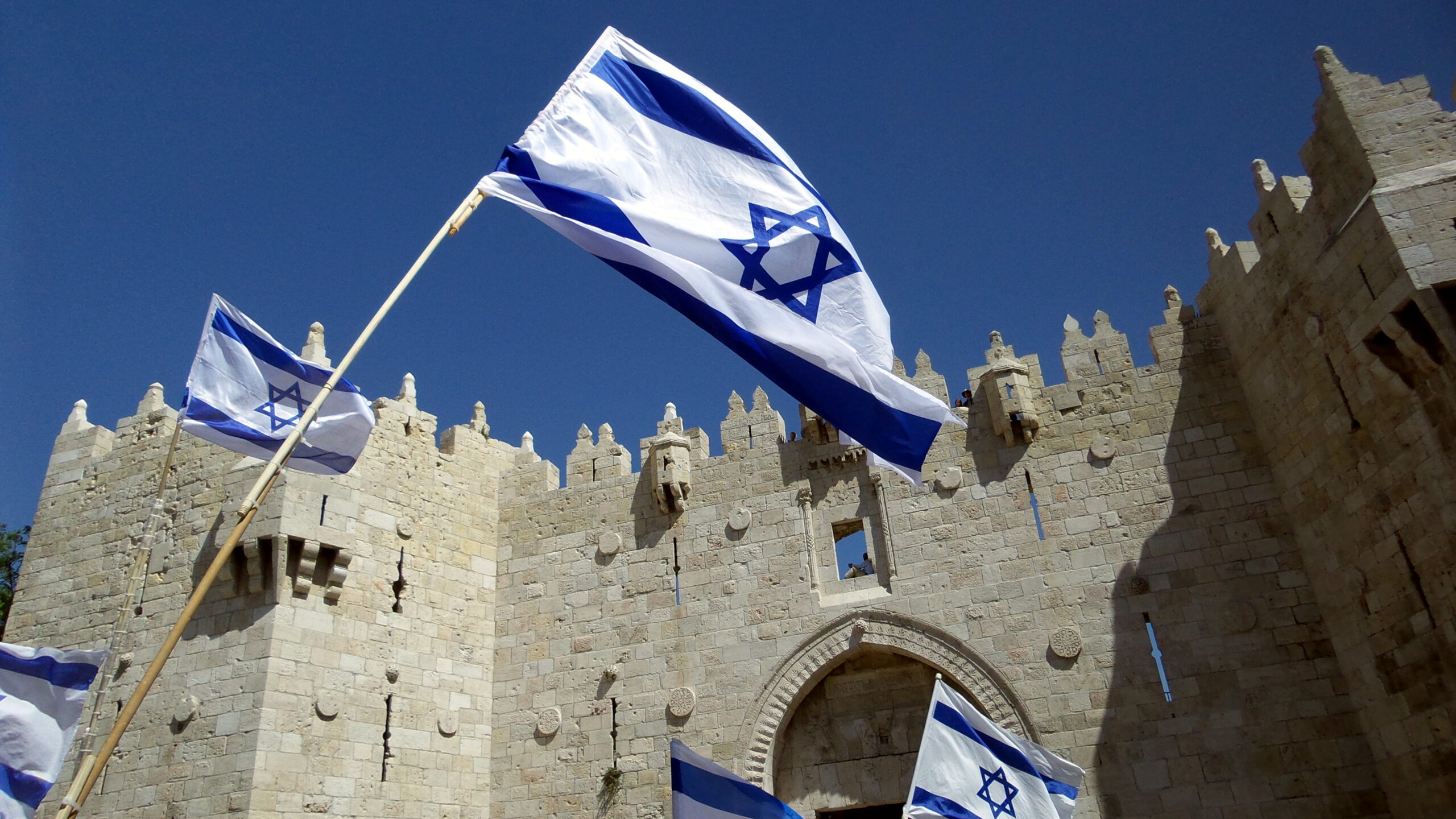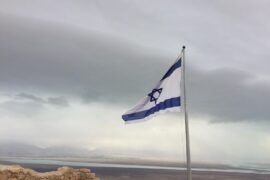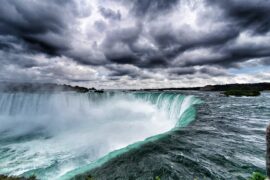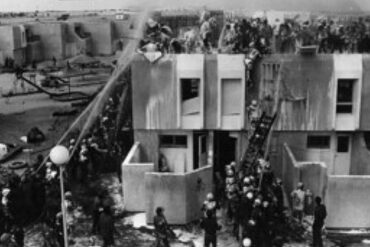To recognize the true significance of Yom Yerushalayim – the day on which the Jewish people liberated Jerusalem from foreign rule – one must work to develop a deep vision of emuna.
Jerusalem’s Place in the Divine Plan
In D’at Tvunot, Rabbi Moshe Ḥaim Lutzatto teaches us to see HaShem authoring history – to appreciate a Divine plan unfolding and to understand everything we encounter in our lives through the context of a greater goal that transcends yet includes all creatures, places and events.
All of Creation, with all of its multiplicity and variety, is actually one organic whole that appears fragmented from the untrained human perspective. Due to our myopic perception, however, man tends to see everything as disconnected – and often even opposing – forces. But when we learn to view the world from the Divine perspective, we become capable of relating to everything we encounter – with all of their unique functions and distinctions – as exceptional pieces of one giant, amazing puzzle.
Learning emuna is learning to see the Divine light in its unity before its having been distilled into multiplicity from the human point of view – to see not only the seemingly fragmented branches but also the unified roots. The study of emuna helps us to recognize the One that precedes and transcends the individual parts yet is at the same time revealed through them, thereby giving them their true significance and purpose in our world.
Because we exist within the framework of time, history seems – from the human perspective – to flow in a long linear process of events. But from the perspective of emuna, history exists as one giant light. What we might perceive to be disconnected events with hundreds of years and thousands of miles between them are actually interdependent expressions of a singular Divine theme in which HaShem’s Oneness is revealed to all of Creation.
Everything in Creation possesses a spiritual back end that manifests itself in our world through a tangible vehicle that expresses its inner content. Everything we encounter on the terrestrial plane possesses a spiritual counterpart in the celestial realm. And a central component of the Hebrew mission requires us to reveal the kedusha inherent in our world through actualizing concrete material expressions for our deepest spiritual values and ideals. Israel is not so much tasked with spiritualizing the material but rather materializing the spiritual in order that the Torah’s loftiest concepts attain full expression in our reality.
Celestial Jerusalem as a spiritual ideal represents the absolute good from beyond this world and the eternal Divine values constantly driving history toward its goal. Terrestrial Jerusalem here on earth is the physical expression of the celestial Jerusalem above. What may appear to the human eye as merely an ancient mountain city is actually the uniquely designed conduit that reveals HaShem’s Oneness to mankind and enables the flow of Divine energy and blessing into our world (Tanḥuma Pekudei 1).
HaShem swore that His Shkhina would not enter celestial Jerusalem above until the Jewish people enters terrestrial Jerusalem below (Zohar 3:15b).
Knesset Yisrael – the unique spiritual organism revealed in this world through millions of bodies in space and time called Jews – is the national receptacle that receives and expresses the Divine Ideal. What the land of Israel – and specifically Jerusalem – is in geographic form, the nation of Israel is in human form. The famed kabalist of Ḥevron, Rabbi Avraham Azulai, teaches in the Ḥesed L’Avraham that the size of the window through which Divine blessing enters our world directly depends on how much of Eretz Yisrael is under Hebrew control.
Jerusalem is the bridge connecting the physical and spiritual realms – the portal between our corporeal reality and the world beyond. And that portal connecting celestial and terrestrial Jerusalem is only open for blessing to enter our world when the human and geographic manifestations of the Divine Ideal unite – when Israel possesses political sovereignty over Jerusalem.
Our Sages explain (Megilla 29a) that when Israel was exiled from our land, the Shkhina was also exiled and that only when the Jewish people returns to Eretz Yisrael does the Divine Presence return. When the children of Israel were separated from Jerusalem, HaShem’s Ideal for this world could not be perceived as unified here on earth. Mankind lacked the ability to fully connect to our inner Source. In such a situation, reality appeared not as one Divine light but as fragmented individual components separate from one another. History became viewed as a merely series of disconnected events.
Yom Yerushalayim Celebrates the Unification of the Divine Ideal
But when the Hebrew nation returned to Jerusalem on the 28th of Iyar, the expression of HaShem’s Ideal became unified with all Creation, establishing the conditions for the fulfillment of the verse that “HaShem will be One and His Name will be One” (Zekharia 14:9).
According to the holy Zohar (3:93), this verse refers to the unification of His Ideal with the reality we experience. Israel’s liberation of Jerusalem ushered in a new historic era for mankind in which the bridge linking this world to the world beyond is back in place. The portal through which Divine blessing enters our world is once again open.
Malkhut Yisrael on earth is the material vehicle that receives and expresses the Divine Kingdom above. The core of this realm, where our ability to perceive and experience our connection to HaShem is strongest, is the Judea region – including and surrounding Jerusalem. We therefore have unique laws and customs exclusively pertaining to this region, such as the commandment for a Jew to rend his garment upon seeing the cities of Judea destroyed – a mitzvah that does not apply to cities in any other portion of our country.
According to both the Beit Yosef and the Mishnah Brurah on the Shulḥan Arukh (Oraḥ Ḥaim section 561), the term “destroyed” is legally defined as being under foreign rule. This means that a Jew who sees a physically ruined and uninhabitable city in a free Judea is not commanded to tear his garment but he would be commanded to do so upon seeing a Judean city under gentile sovereignty – even if that city is fully developed and abounding with vibrant Jewish life. And indeed, following the liberation of Jerusalem in the Six Day War, Rabbi Zvi Yehuda HaKohen Kook ruled that although our Holy Temple is not yet rebuilt, we no longer rend our garments upon seeing the Temple Mount.
Yom Yerushalayim Inaugurates a New Historic Era
While the return of the Jewish people to the city that had been the central focus of our dreams and tefillot for thousands of years would be sufficient to warrant the establishment of a new festival (complete with Hallel), Yom Yerushalayim actually commemorates so much more.
The 28th of Iyar is the day on which the bridge linking heaven and earth was restored. The portal through which Divine blessing enters our world was reopened. Yom Yerushalayim inaugurates a new historic era in which the Shkhina is no longer in exile and all humankind can recognize and experience its inner connection to the timeless and boundless ultimate Reality that creates all, sustains all, empowers all and loves all.





